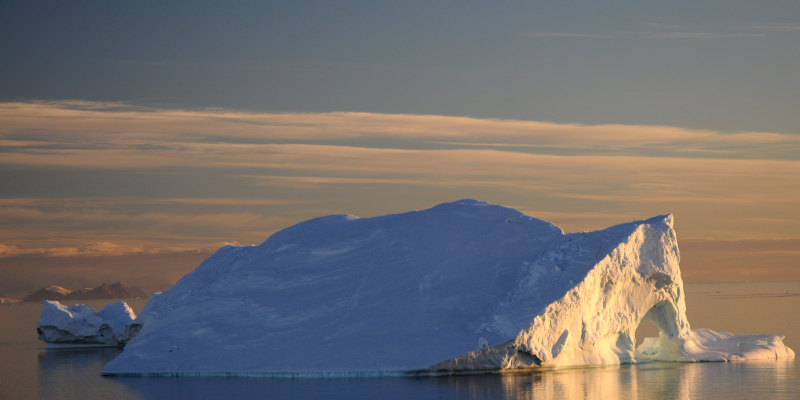The religious offshoot of Judaism - Hasidism - began its almost three hundred-year history precisely on the territory of Ukraine. Since then, its followers have spread all over the world, and about 20-40 000 Hasidim have a tradition to gather annually around the grave of their tzadik Rabbi Nachman in Uman: it was here, at the site of the deaths of thousands of Jews, that the rebbe bequeathed himself to be buried. A mass pilgrimage to the Jewish New Year of Rosh Hashanah (this year it will take place on September 18-20) has become quite common for Uman people for decades, but they have no consensus on this matter.
Some do not like the noise and revelry during the celebration, others are alien to traditions, and still others make good money on this: according to various estimates, the Hasidim spend from 15 to 20 million dollars annually, turning their religious holiday into a source of income for both local entrepreneurs and for ordinary people. However, this year, when the coronavirus epidemic was raging around the world, the question of the arrival of pilgrims became even more controversial - not only for the Uman people themselves, but also for government officials. The Governments of Ukraine and Israel issued a joint appeal to refrain from travel until a more favorable situation. At one of the meetings, the State Commission for Fuel and Energy Sector and Emergency Situations instructed to prepare a plan for organizing the reception of 5-10 000 Hasidim, taking into account sanitary and epidemiological standards; and the mayor of Uman, Olexander Tsebriy, proposed to close the city for entry, setting up checkpoints around it. Wanting to draw attention to this problem, the mayor even came with a tent to spend the night under the President's Office. However, some Uman citizens saw this behavior as an attempt to "earn points" before the local elections, and not a way to protect their rights: according to them, corruption is rampant in the city, and the mayor himself also has a "pretty penny" from the arrival of pilgrims. Representatives of the Hasidic community, in turn, say that a trip to the grave of their spiritual mentor plays a big role in their life, and for this they are ready to comply with all quarantine rules: they even developed their own action plan, transferring it to the regional council and the Ministry of Health.
While there is still no final government decision on the pilgrimage this year, 112.ua figured out what passions are raging around the arrival of pilgrims and what place the coronavirus takes in this.
"Little Israel"
A walk in Uman begins from a small area of the bus station, through which several dozen regular buses run daily. On weekends, it is especially crowded here: not only Ukrainian tourists, but also guests from European countries come to see the sights of the town, numbering just over 80 thousand inhabitants. In a few minutes from here, dense thickets begin - the famous Sofiyivka dendrological park. A wide alley, propped on both sides by the greenery of a wide variety of trees, is replete with walking people: among them you can hear snatches of phrases in German, Polish, English ...
If you ask local residents about the Hasidim, they will immediately point to Pushkin Street, around which a "Hasidic microdistrict" was formed for several decades. You can find it without any prompts: along the way, there are four men with sidelocks and wearing white and black kippahs on their heads, betraying Orthodox Jews as their owners. The city landscape along a kilometer-long street looks quite ordinary: shops, Soviet high-rise buildings, rickety one-story houses, cottages ... Only the inscriptions can confuse: signs, signs, advertising posters and even graffiti on fences - all exclusively in Hebrew. In the back streets of nearby district, there is a synagogue, a free canteen for those in need for 20 thousand seats and a historical and cultural center of the Hasidic movement, where the grave of Rabbi Nachman is located - all these buildings are unmistakably recognizable against the background of the rest of the building, standing out with a lush facade and incomprehensible squiggles on the tablets.
Now it is not crowded here, but from time to time a taxi drops Hasidim with suitcases on the porch of the Sharon Zion hotel. "Usually the influx is much larger, but it's too early to say. This year Rosh Hashanah is celebrated from 18 to 20 September, and the bulk of the pilgrims arrive a few days before the holiday, sometimes a week. In general, you can always meet Hasidim in Uman, because it is not the only Jewish holiday. In August, at this time, there is usually some kind of women's holiday: unmarried girls gather, dance, ask to get married and create a happy family, but now something is not visible. Over 2000 people here either have a residence permit or even Ukrainian citizenship and have settled in absolutely all districts of the city. Last year at this time there were much more pilgrims, but now there are few visible: Apparently, they are hiding somewhere in their homes, "says a local resident Olga.

Usually about 30 thousand pilgrims from more than 20 countries of the world come to Rosh Hashanah - this is comparable to almost a third of the city's population. During this period, the streets in the vicinity of the grave of Tzadik Nachman are almost closely packed with people, and the area around is cordoned off by almost half a thousand security officials from all over Ukraine, as well as a dozen Israeli police officers who are sent specially to help our people during the celebration. Entry and exit through checkpoints is allowed only with a special pass or registration.
The resettlement of such a large number of Hasidim, of course, is causing great excitement. "Those who are richer stay at the Khoshen hotel. At one time, even a large Sharon Zion hotel was built, new ones are being built. The less well-off stay in cheaper and simple hostels, 10-15 people per room. In the Park of Joy some even sleep in tents. In general, the Jewish community helps those who do not have enough money to travel, and organizes the trip, taking into account the meals in their public dining room. Some Hasidim come to Uman without pre-booked accommodation, so locals always stand around the checkpoints and offer to stay with them, for about 200-300 dollars per person for the entire period of the celebration, which is quite cheap, in contrast to the prices for hotels. Someone even settled in garages. In general, this is a very good additional income: some even rent out their homes, and these days they themselves go to spend the night in a tent in the city park ", - says Olga. According to her, most of the houses on the Pushkin street and residential buildings within a radius of 3 kilometers have long been sold to the "chosen people": someone was able to offer a favorable price, and someone was tired of the noisy crowd of Hasidim. The new owners of the houses decided to convert some of them into hotels, and some simply to equip with beds, so the Hasidim often take on the issue of accommodation themselves.
“Previously, we rented our house to the Hasidim every year,” says Alla, the owner of the local hostel. “During this period, I went to live with my parents with my two children. But I don’t know how it will be this year. So far, no one is there, no one is booking. The Hasidim during the holiday, as well as on Shabbat, have no right to work. Neither use the elevator, nor turn off the lights, nor even receive phone calls. Therefore, people stand around the checkpoints and offer such different services. Someone earns an extra penny on cleaning, some are fighting for the opportunity to bring suitcases, and teenagers often come from the city and earn pocket money here on errands and "bring it, give it." The shops after Rosh Hashanah they stand half empty ... In general, I can say without exaggeration that for local residents, pilgrimage is a source of additional income, especially for people over 50 who are no longer interesting for employers"
Ban on celebrations
This time, the coronavirus epidemic made its "adjustments" to the pilgrimage program. According to preliminary estimates, from 5 to 10 000 Hasidim will come to the grave of Rabbi Nachman to celebrate the coming of 5781 according to the Jewish calendar. There is still no final government order on how the transportation of such a large number of people will be organized, who and how will be responsible for the implementation of all sanitary and epidemiological standards: the issues are under discussion. In mid-July, the Foreign Ministry announced the impossibility of the traditional celebration of Rosh Hashanah this year: Israel is in the "red" epidemiological zone, and there will not be enough beds for observation and treatment of covid-infected people; it will be difficult for law enforcement officers to control the self-isolation of the Hasidim, and indeed, mass events in Ukraine are still banned. Similar statements came from Israel, but its concern is caused by several other reasons: they fear that pilgrims will bring the coronavirus with them from Ukraine. They even remember how last year, during the measles epidemic, the Hasidim brought this virus to New York, and the city had to be quarantined ... According to official statistics, the incidence rate in Israel is 5 times higher than ours: every 91 is considered covid-infected. However, such figures can only be relied on taking into account the quality and scope of PCR testing, so the real epidemiological picture may be very different from the documented one. After all, it is not only from Israel that people come to the tzaddik's grave: the Hasidic community is developed in more than 20 countries around the world, including the United States and Europe.

The Ukrainian authorities have not yet decided to close the international traffic for the Rosh Hashanah period, so Uman is gradually filling up with pilgrims, for whom exactly the same rules apply as for other travelers. So, tourists from "red" countries on arrival must pass a PCR test at the airport or provide a fresh certificate with a negative result for Covid-19, or go for two weeks of self-isolation. However, some fear that during the period of mass pilgrimage, such methods will be ineffective: a certificate can be bought, and law enforcement officers will not have enough opportunities to track the isolation of thousands of Hasidim.
Pointing to this, the mayor of Uman, Olexander Tsebriy, proposed, in turn, to close the city with checkpoints, allowing travel only by registration. According to him, the Commission on Emergencies of the Uman City Council has already resorted to such methods at the beginning of quarantine, so the local authorities have experience. In Facebook video messages, the city mayor informs about the amorphousness of the central government in the issue of Hasidic pilgrimage and reports to the Uman people about all his actions taken: it comes to the point that Tsebriy equips himself with a sleeping bag and goes to spend the night under the President's Office (although the ban on entry and the organization of quarantine restrictions are included in the powers of the government, not Zelensky). Some local residents support the activity of the mayor and approve of even the most radical measures, but others express skepticism. And the president of the International Charitable Fund named after Rabbi Nachman of Bratslav notes in an official letter that the position of the mayor "looks like a deliberate provocation of an interethnic conflict," and the Israeli embassy, at the same time, does not find manifestations of anti-Semitism in it.
At the same time, the authorities are discussing not only the ban on the celebration of Rosh Hashanah, but also the possibility of inviting guests in limited numbers. So, among other things, the State Border Service was instructed to prepare a memo for foreigners in four languages, which should explain the conditions of stay in the country and the current quarantine rules, in case of violation of which pilgrims face a ban on entry to Ukraine for several years. The Cherkasy Regional Council is developing safe routes for the transportation of pilgrims in groups to maintain social distance. The most active proposals are put forward by the Hasidim themselves from the Rabbi Nachman fund: they promise to divide the synagogue into parts, regularly disinfect the premises (it is still being carried out), provide temperature control and wear medical masks.
However, in order to celebrate the New Year at the grave of their spiritual mentor, the pilgrims are ready to make any concessions. So, if the entrance to Uman was closed, the Hasidim even suggested celebrating the holiday right on board the aircraft, making a short flight around the cultural and historical center named after Rabbi Nachman. “The Hasidim value their health in the same way as the Ukrainians, so all measures against the coronavirus will be implemented. Upon arrival, the pilgrims will be required to take a test and go to self-isolation until the results are clarified: a separate hotel has been allocated specifically for this in Uman. Each Rosh Hashanah the Hasidic quarter opens its own hospital, which will provide assistance in case of need. This year, 26 doctors from Israel will work there. We have allocated 300 thousand dollars for health care (and last year - about 100 thousand dollars), purchased ventilators. The hospital is fully equipped with beds, equipment and even has its own ambulance. So our medical care is organized at a high level, which cannot be said about hospitals in Uman," said Khaim Khazin, a representative of the Hasidic community in Uman.
Command to rejoice
It should be noted that the protest moods of Uman people about the approaching Rosh Hashanah are often only indirectly related to the fear of contracting coronavirus. "The Hasidim behave so undisciplined and riotous that during the pilgrimage period I am simply afraid to let the children out of my home. All around the streets after their Sabbaths are littered, and those who rent out apartments have to make repairs. Every year I hear Hasidim start fires, local girls are offered all sorts of obscenities for money, they use drugs ... I can't imagine how you can pacify such a crowd and oblige everyone to wear masks. Sometimes it feels like it's not them came to us, but we came to visit them ", notices Olga. The indignation of local residents is largely justified. So, during the Rosh Hashanah celebration last year, the National Police officers opened 12 criminal proceedings against the Hasidim, mainly related to drug trafficking and carrying weapons. And at the beginning of January 2020, an international scandal almost broke out: a group of Hasidim fought with the guards of the cultural and historical center of Rabbi Nachman, to which the locals came to help. According to the version of one of the parties to the conflict, the drunken Hasid asked the guard to take him home and open the doors, since the Sabbath does not allow him to do it on his own, and, having received a refusal in response, began to react aggressively. Some local residents, in their own words, are outraged by the customs of Orthodox Jews. Traces of latent cultural confrontation can be seen throughout the city. Even at a distance from the "Hasidic quarter", neo-Nazis leave their messages on the shutters of kiosks, walls and fences: swastikas, the inscriptions and sometimes there are even portraits of Hitler.

At the same time, the Hasidim themselves say that they come to Uman to have fun in the company of their spiritual leader Nachman, without having any intention of offending anyone. "People, of course, are different, but deeply religious Jews behave very dignified and respectful. The unrestrained celebration of the coming of the New Year should in fact be accompanied by a feeling of deep trepidation before God: after Rosh Hashanah comes the days of judgment, during which it will be decided, will a person survive until the end of next year.” But Rabbi Nachman urged to rejoice anyway, no matter what, - this is one of the most important commandments for the Hasidim. We strive to celebrate the New Year in Uman, where Rabbi Nachman bequeathed himself to be buried. He died, by today's standards, very young - at 38 years old - and before that he told two of his disciples: "When my days are over and I leave this world, I will intercede for everyone who comes to my grave, read 10 psalms and give alms. No matter how serious his sins or mistakes are, I will do everything in my power to save and cleanse him. I will go through the whole universe. For the sideways I will pull him out of hell. "Therefore, so many pilgrims come to the grave of the spiritual leader, who seek to enlist his support in the upcoming trial to enter the new year cleansed. It is unlikely that the threat of coronavirus can stop the flock on the way to its spiritual leader, but I am sure that all the quarantine rules will be observed. Rabbi Nathan, a disciple of Rabbi Nachman , said: “Even if the road to Uman was studded with knives and swords, I would still crawl along it to visit the grave of Rabbi.” I have come to Ukraine 5 times in different years and saved money for this trip, but, apparently will have to postpone it for another year. I will celebrate Rosh Hashanah with my family here," Israelite Jonathan Melamed shares his story.
And in conclusion, he expresses the hope that Ukrainians will begin to show less hostility and more interest towards other people's religious customs: this is the only effective formula in order to establish fruitful communication with each other.





 Hundreds of figurines and other ceramic artifacts or shards from the shipwreck were examined in the study.Credit...Jonathan J. Gottlieb
Hundreds of figurines and other ceramic artifacts or shards from the shipwreck were examined in the study.Credit...Jonathan J. Gottlieb










